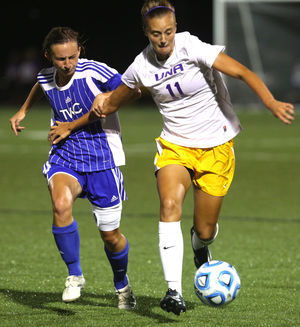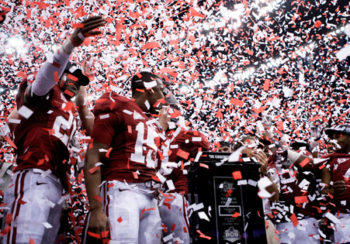Want to Play Sports In College? What do You Need to Know?
First, register with the NCAA in 10th grade
You may or may not play Division I sports in college, but even if you do not, please do not take any risk of violating NCAA rules. Registration with the NCAA takes but a few minutes of time.
What are the NCAA Divisions? What are the differences between Division I, Division II, and Division III programs?
Divisions I and II may offer you athletic scholarships for the all-in cost of attending the college. Division III schools do not offer athletic scholarships, however, they frequently offer merit aid to athletes that are attractive to the coach and school.
Division I
Division I is the highest division in the NCAA and is composed of the teams and schools that you frequently see on television. Many of the universities that compete in Division I are flagship public research universities like The University of Texas-Austin, Ohio State, UCLA, etc. or private research universities like Rice, USC, Vanderbilt, the Ivy League schools, etc. The competition is fierce and near-professionalized in many of the sports and the athletes that compete for Division I programs are usually amongst the nation’s best performers in high school. Typically, Division I athletics require massive amounts of time and energy from the students who play for a university’s teams.
In football, baseball/softball, basketball, hockey, swimming, track, soccer, and lacrosse, the in-season commitment is typically 50 hours per week or more including practices, travel, and games or events. Official Rules limit the amount of sanctioned practice to 20 hours per week, but our clients and other athletes have reported a much different experience in actuality. Out of season work is typically 20-30 or more hours per week. In secondary sports, the in-season commitment is usually around 40 hours per week and 15-20 hours per week off-season.
In summary, Division I athletics are like a full-time job and require a huge commitment from the student-athletes. To manage academic and athletic demands, one needs to be well-organized and highly disciplined in their habits. Furthermore, the time demands of a Division I sport will preclude many student-athletes from completing majors in high workload areas like engineering, mathematics, computer science, and other STEM fields.
Division II
Division II athletics programs form a middle level between the hyper-demanding and competitive Division I programs and the more participative oriented Division III athletic offerings. Division II schools offer full athletic scholarships, but usually have a smaller number of scholarship athletes on each team. For example, in football, Division I schools offer about 85 scholarships per season, but in Division II that number is 36. Division II schools are often not as strong as Division I or Division III schools academically.
There are a handful of outstanding academic universities in Division II, mostly small to medium sized private colleges, but many of the schools are of secondary or tertiary quality. Rollins College, Bentley University, and UC-San Diego are excellent schools that play Division II sports. In Texas, St. Edward’s University is a solid academic institution, but the remainder of the Division II schools in the state are not so strong. Schools like West Texas A&M, Tarleton State, and Midwestern State are not particularly high-powered academically.
Division II athletics are pretty strong in terms of the level of competition and many of the athletes in Division II will be spending much of their time out of class working on their sport. However, the demands of Division II in terms of practice time are at least 10-25% lower than their counterparts in Division I.
Division III
Division III athletics offer a nice balance for college student-athletes. Division III athletics programs span the gamut from hyper-competitive to more participative, but still allow student-athletes to have time to focus on their academic demands. Typical time spent on sports in-season for Division III athletes is 20-30 hours per week and out of season 5-10 hours per week. This leaves plenty of time for students to maximize their learning and get a first rate education in their area of study.
Division III schools are mostly teaching universities/liberal arts colleges; some of the strongest academic institutions in the U.S. are members of Division III. Elite colleges like Amherst, Williams, Pomona, Haveford, and Oberlin all play in Division III. Some schools like Johns Hopkins and Colorado College participate in Division III for most sports, but have a Division I program in one or two sports.
 Division III schools do not offer athletic scholarships, but will frequently offer substantial merit aid packages to student-athletes that the school and its coaches find attractive. Nearly all Houston-area student-athletes can play sports at the Division III level. Texas’ TAPPPS, 5-A, and 6-A athletic conferences play at a very high level and athletes from Houston’s top public and private schools will be sought after by many Division III programs.
Division III schools do not offer athletic scholarships, but will frequently offer substantial merit aid packages to student-athletes that the school and its coaches find attractive. Nearly all Houston-area student-athletes can play sports at the Division III level. Texas’ TAPPPS, 5-A, and 6-A athletic conferences play at a very high level and athletes from Houston’s top public and private schools will be sought after by many Division III programs.
In summary, Division III offers a way to play sports in college without crazy levels of commitment. Furthermore, a good athlete from Houston might get accepted to a Division III school, and likely a strong academic program, that they would not have access to without their athletic abilities.

